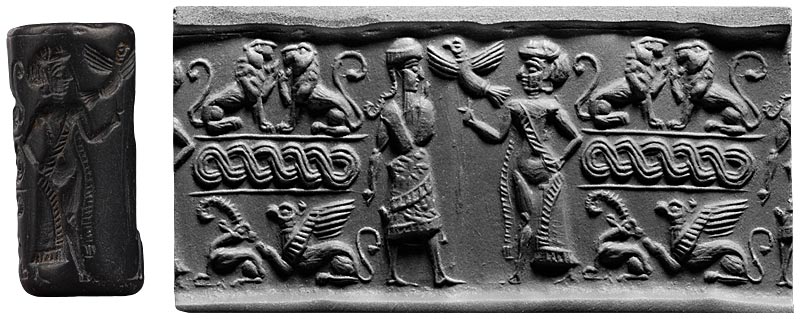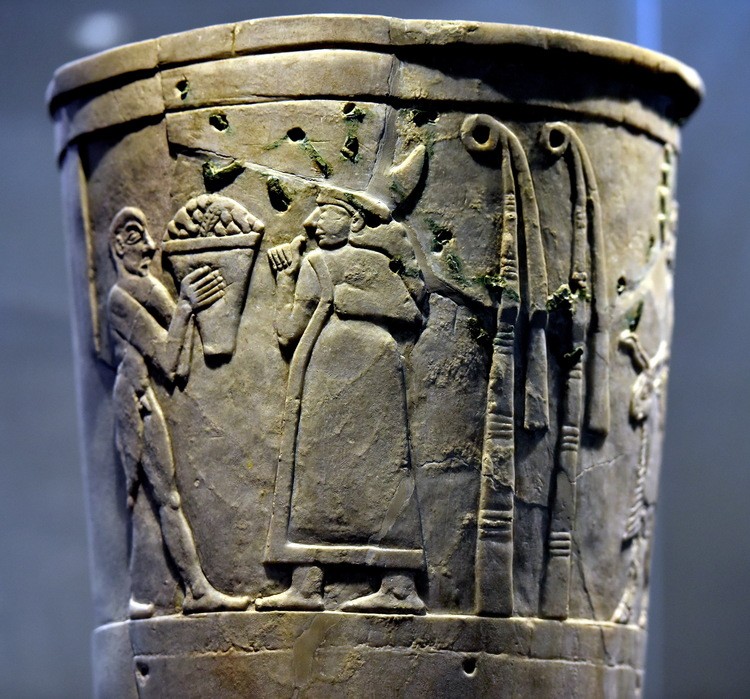

Accordingly, that many third-millennium rulers described themselves as her spouse, points to Inana's significant agency in wielding political power ( Westenholz 2000: 75). Practiced in the late third and early second millennium BCE, the sacred marriage rite, which may have "have been only an intellectual construct, rather than an event in real life", nevertheless served to express the relationship between the king and the divine world ( Jones 2003: 291). Attributed to early Sumerian history, the so-called "sacred marriage" ceremony celebrated the marriage of Inana (represented by her high priestess) and Dumuzi (represented by the ruler) during the New Year's festival to ensure prosperity and abundance ( Szarzyńska 2000: 63). The role of the goddess in legitimizing political power was not, however, restricted to her masculine aspect as the warlike Ištar but is attested also for the sexual Inana in her female aspect. The warrior aspect of Inana/Ištar, which does not appear before the Old Akkadian period ( Selz 2000: 34), emphasizes her masculine characteristics, whereas her sexuality is feminine. Westenholz 1999: 49) and becomes more prominent in the Neo-Assyrian veneration of Inana/Ištar, whose two most important aspects in this period, namely, Ištar of Nineveh and Ištar of Arbela, were intimately linked to the person of the king ( Porter 2004: 42). This is already visible in the Old Akkadian period, when Naram-Sin frequently invokes the "warlike Ištar" ( aštar annunītum) in his inscriptions ( A. The warlike aspect of the goddess tends to be expressed in politically charged contexts ( Leick 1994: 7) in which the goddess is praised in connection with royal power and military might. Inana/Ištar is equally fond of making war as she is of making love: "Battle is a feast to her" Harris 1991: 269). Inana/Ištar was also the patron goddess of prostitutes. Accordingly, Inana/Ištar was the recipient of prayers regarding (im)potency or unrequited love ( Biggs 1967: 115 Leick 1994: 193ff). The young Inana of Sumerian poetry, who says "Plough my vulva, man of my heart" Leick 1994: 91) is no less desirous than the Inana/Ištar portrayed in Gilgameš: "Let us enjoy your strength, so put your hand and touch our vulva!" ( Dalley 2000: 79). There is, arguably, a persistent commonality between these two natures of Inana/Ištar: her sexuality. Her advances, however, are rejected by the hero who accusingly recounts a string of past lovers she has cast aside and destroyed ( Dalley 2000: 77ff). Taken by the handsome Gilgameš, Inana/Ištar invites him to be her lover. These actions are in stark contrast with the portrayal of Inana/Ištar as a femme fatale in the Epic of Gilgameš. Even when given independent agency, she is mindful of boundaries: rather than lying to her mother and sleeping with Dumuzi, she convinces him to propose to her in the proper fashion ( Jacobsen 1987: 10). Her marriage to Dumuzi is arranged without her knowledge, either by her parents or by her brother Utu ( Jacobsen 1987: 3). In Sumerian poetry, she is sometimes portrayed as a coy young girl under patriarchal authority (though at other times as an ambitious goddess seeking to expand her influence, e.g., in the partly fragmentary myth Inana and Enki, ETCSL 1.3.1 and in the myth Inana's Descent to the Netherworld, ETCSL 1.4.1). Inana/Ištar is by far the most complex of all Mesopotamian deities, displaying contradictory, even paradoxical traits ( Harris 1991 see also Bahrani 2000).


The relief dates to the time of king Nebuchadnezzar II (r. The relief was part of the processional way from the temple of Marduk to the akītu-house, where the New Year's festival was celebrated. Glazed brick relief from the city of Babylon, showing the lion, the symbol of Ištar.


 0 kommentar(er)
0 kommentar(er)
